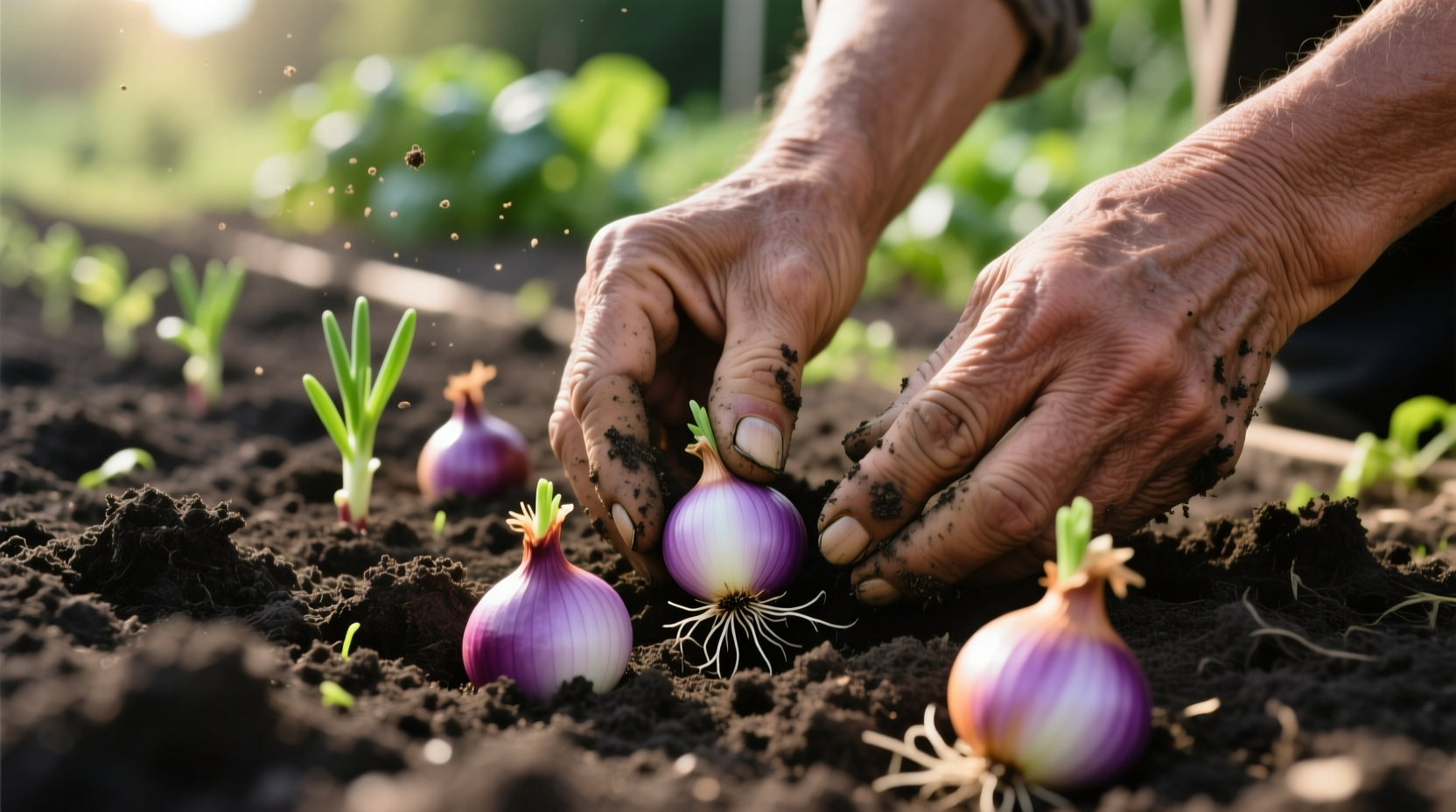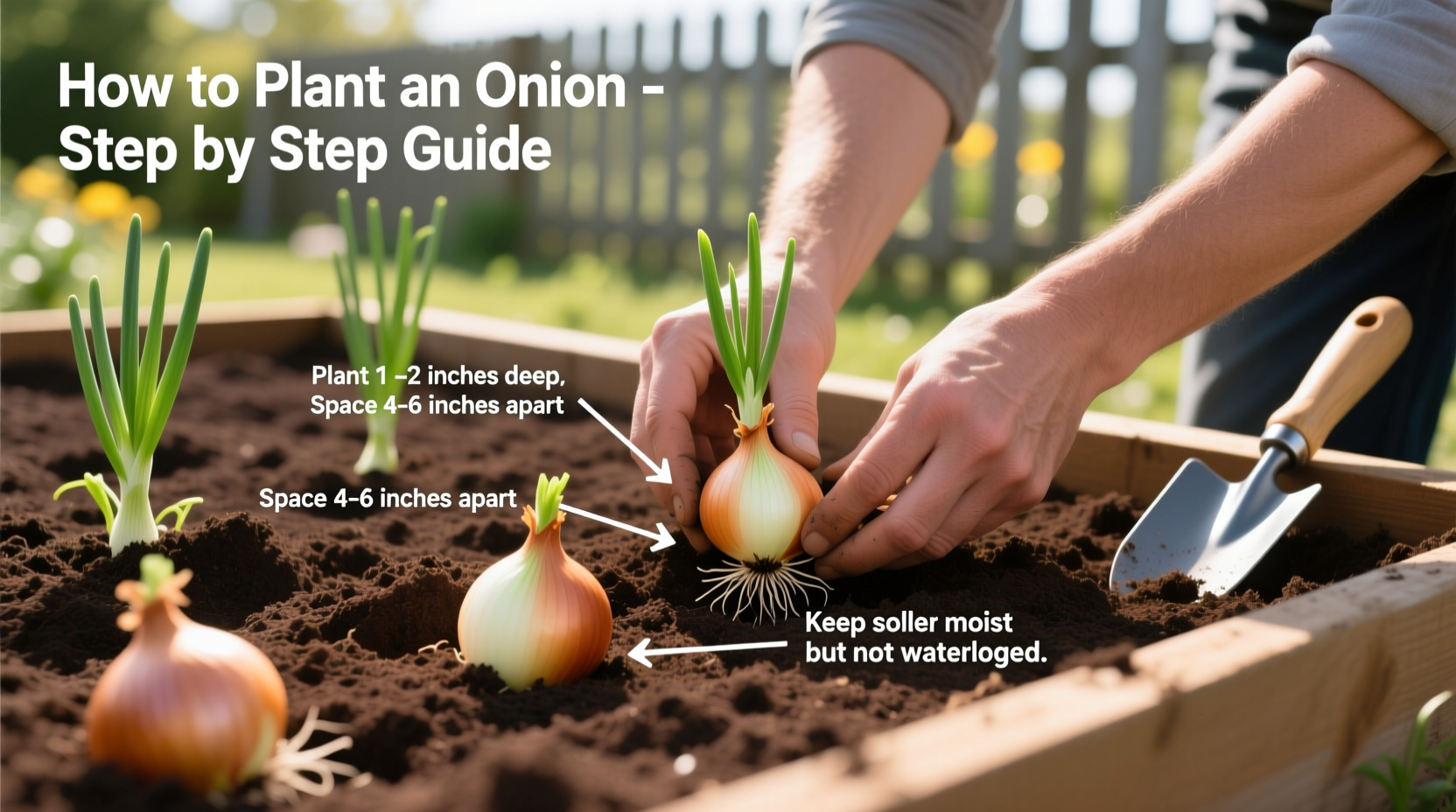Perfect Timing for Onion Planting Success
Knowing when to plant onions makes all the difference between a thriving crop and disappointing results. In most USDA hardiness zones, plant onion sets as soon as the ground thaws in early spring—typically late February through April depending on your climate. The Old Farmer's Almanac confirms onions tolerate light frost but need soil temperatures of at least 40°F (4°C) to establish roots properly.
For fall harvest varieties in warmer climates (zones 8-10), plant in September or October for overwintering. The University of California Cooperative Extension emphasizes that planting timing directly correlates with bulb size—earlier planting generally produces larger bulbs. Remember that day-length requirements vary by onion type: long-day varieties need 14-16 hours of daylight to bulb properly, while short-day types require only 10-12 hours.
Soil Preparation Essentials
Creating the ideal soil conditions for onions prevents common problems like rot and stunted growth. Onions demand well-draining soil rich in organic matter with a pH between 6.0 and 7.0. Before planting, incorporate 2-3 inches of compost into your garden bed to improve soil structure and nutrient content.
Avoid fresh manure which can cause excessive foliage growth at the expense of bulb development. The USDA Natural Resources Conservation Service recommends conducting a soil test to identify specific nutrient deficiencies. Most gardens benefit from adding phosphorus-rich amendments like bone meal (10-20 pounds per 100 square feet) to encourage strong root development.
| Onion Variety | Day Length Requirement | Best Planting Zone | Maturity Days |
|---|---|---|---|
| Yellow Sweet Spanish | Long-day | 3-9 | 110 |
| Red Creole | Intermediate-day | 5-10 | 95 |
| White Bermuda | Short-day | 7-11 | 90 |
| Walla Walla Sweet | Long-day | 3-8 | 90 |
Step-by-Step Planting Process
Follow these onion planting instructions for optimal results:
- Prepare sets or seeds: If using sets (small bulbs), separate any that have sprouted. For seeds, start indoors 8-10 weeks before last frost date.
- Create planting furrows: Dig shallow trenches 1-2 inches deep, spacing rows 12-18 inches apart.
- Position onions correctly: Place sets with pointed end up, 1-2 inches deep. For seeds, plant ¼ inch deep in groups of 3-4.
- Space properly: Maintain 4-6 inches between plants for standard bulbs; 2-3 inches for green onions.
- Cover and water: Gently cover with soil and water thoroughly but avoid saturating.
The Cornell University Gardeners' Resource emphasizes that proper planting depth prevents issues like premature bolting. Planting too shallow exposes bulbs to sunlight causing greening, while planting too deep delays growth. For container gardening, use pots at least 8 inches deep with drainage holes and quality potting mix.

Post-Planting Care for Maximum Yield
Consistent care after planting determines your onion harvest success. Water newly planted onions with 1 inch of water weekly, increasing during dry spells. Mulch with straw or shredded leaves to maintain moisture and suppress weeds—critical since onions have shallow roots that compete poorly with weeds.
Fertilize three weeks after planting with a balanced 10-10-10 fertilizer, then again when bulbs begin forming. The National Gardening Association notes that excessive nitrogen promotes leafy growth at the expense of bulb development. Stop watering completely when tops start falling over to allow proper curing.
Troubleshooting Common Onion Problems
Address these frequent onion growing challenges promptly:
- Bolting (flowering): Caused by temperature fluctuations. Remove flower stalks immediately to redirect energy to bulb growth.
- Thrips damage: Look for silvery streaks on leaves. Control with insecticidal soap sprays every 5-7 days.
- Pink root: Fungal disease causing pink discoloration. Rotate crops and avoid overwatering.
- Small bulbs: Usually from overcrowding or late planting. Thin plants to proper spacing if needed.
According to the USDA Plant Hardiness Zone Map timeline, onions progress through distinct growth stages: root establishment (2-3 weeks), leaf development (4-6 weeks), bulb initiation (when day length triggers bulbing), and bulb maturation (4-6 weeks). Understanding this progression helps diagnose growth issues at each phase.
Harvesting and Storage Tips
Harvest onions when 75% of tops have fallen over naturally, typically 90-120 days after planting depending on variety. Carefully dig bulbs using a garden fork, then cure them in a warm, dry, well-ventilated area for 2-3 weeks. The University of Minnesota Extension confirms proper curing extends storage life significantly.
Store cured onions in mesh bags or braided in a cool (32-40°F), dark place with 65-70% humidity. Avoid storing near potatoes which release moisture and gases that accelerate spoilage. Sweet onions have shorter storage life (2-3 months) compared to storage varieties (6-8 months).











 浙公网安备
33010002000092号
浙公网安备
33010002000092号 浙B2-20120091-4
浙B2-20120091-4